The camera's not that great at filming in low-light conditions.
From tight and narrow spaces to high-speed visuals, the environment and the subject(s) do not concern the Panasonic HC-X1 professional video camera. This device enables extra slow-motion recording and can be used to accommodate most needs, from cinema production to online distribution.
1-chip 1" MOS sensor, 9.46 megapixels (effective)
Leica Dicomar 4-drive lens system (focal length: 8.8 - 176 mm)
20x optical / 200x digital
Advanced optical image stabilizer (4K/UHD/FHD) and 5-axis hybrid O.I.S. (FHD)
MPEG-4 AVC / H.264, 3840 x 2160
SDHC/SDXC memory card (2 x slots)
1 x HDMI out, 1 x Analog Audio-video out, 2 x XLR audio in, 1 x Headphones out, 2 x 2.5-mm jack for remote (zoom and focus), 1 x USB
2-channel recording
5900 mAh battery included
6.8" x 7.7" x 13.6"
4.4 lbs
3 years (registration required)
The 1.0-type stacked CMOS sensor will be able to ensure awesome background bokeh defocus effects with matching sensitivity, reducing noise and capturing crisp and detailed images both in low-light and overexposed conditions. The hybrid AF system ensures accurate focusing and tracking.
The image stabilization tech is shoddy.
With its palm-sized and lightweight construction, the Sony HXR-NX80 can be used to film anything, anywhere, from capturing different occasions without even taking the scene's demands into account to streaming weddings, sports events, interviews, seminars, and more, recording footage with stunning clarity.
1.0-type back-illuminated Exmor RS CMOS sensor, 14.2 megapixels (effective)
ZEISS Vario-Sonnar T lens (focal length: 9.3 - 111.6 mm)
12x optical / 48x digital
SteadyShot™ image stabilizer
MPEG-4 AVC / H.264, 3840 x 2160
Memory Stick PRO Duo or SDHC/SDXC memory cards (2 x slots)
Wi-Fi, NFC, 1 x HDMI out, 1 x Analog audio-video out, 2 x XLR audio in, 1 x Headphones out, 1 x 2.5-mm jack for remote, 1 x USB
2-channel recording
1900 mAh battery included
5.1" x 7.3" x 11.4"
2.9 lbs
1 year
Some find the controls pretty inaccessible.
The Canon XA11 is more flexible and adaptable than most camcorders, designed to fit, aid, and facilitate most shooting situations, from those where you need both speed and mobility to different events, government halls, corporate environments, and wedding venues. The device matches crisp and precise imagery with noiseless audio.
1/2.84" CMOS sensor, 2.91 megapixels (effective)
Canon lens (focal length: 3.67–73.4 mm)
20x optical / 400x digital
Optical system (lens shift) + electronic stabilization
MPEG-4 AVC / H.264, 1920 x 1080
SDHC/SDXC memory card (2 x slots)
1 x HDMI out, 1 x Analog audio-video out, 2 x XLR audio in, 1 x Headphones out, 1 x 2.5-mm jack for remote, 1 x USB
2-channel recording
1960 mAh battery included
5.2" x 7.1" x 9.1"
2.5 lbs
1 year
The native mic could use noise-reduction tech.
Despite its reduced size, the Canon VIXIA HF G50 will enable even the least experienced users to capture high-quality 4K footage. The DIGIC DV 6-image processor will automatically analyze the scene without delay and take into account varying image parameters to ensure optimized results without image noise.
1/2.3" CMOS sensor, 8.29 megapixels (effective)
Canon lens (focal length: 3.67–73.4 mm)
20x optical / 400x digital
Optical system (lens shift) + electronic stabilization
MPEG-4 AVC / H.264, 3840 x 2160
SDHC/SDXC memory card (2 x slots)
1 x HDMI out, 1 x Analog audio-video out, 1 x Headphones out, 1 x Microphone in, 1 x 2.5-mm jack for remote, 1 x USB
2-channel recording
1960 mAh battery included
4.5" x 3.3" x 9.1"
1.91 lbs
1 year
The 5-axis correction tech will be minimizing the blurring that comes from handheld shaking, making sure that the footage remains smooth. The post-editing tools will enable easy tracking, smooth zooming, and exact panning. The model's 5 microphones will enable capturing 5.1-channel surround sound.
The LCD touchscreen is not very responsive.
The Panasonic HC-WXF991K measures only 2.7 x 3 x 6.4 inches and weighs less than one pound yet, from most standpoints, can tussle with most mid-range pro models and even certain premium camcorders, giving you the creative and editing tools necessary to film and produce like pros.
1/2.3" BSI MOS sensor, 8.29 megapixels (effective)
LEICA Dicomar lens (focal length: 4.08 – 81.6 mm)
20x optical / 1500x digital
5-axis hybrid O.I.S.
MPEG-4 AVC / H.264, 3840 x 2160
SDHC/SDXC memory card
Wi-Fi, 1 x HDMI out, 1 x Analog audio-video out, 1 x Headphones out, 1 x Microphone in, 1 x USB
5.1-channel / 2-channel recording
1940 mAh battery included
2.7" x 3" x 6.4"
0.9 lbs
3 years (registration required)
This site is a free online resource that strives to offer helpful content and comparison features to its visitors. Please be advised that the operator of this site accepts advertising compensation from certain companies that appear on the site, and such compensation impacts the location and order in which the companies (and/or their products) are presented, and in some cases may also impact the scoring that is assigned to them. The scoring that appears on this site is determined by the site operator in its sole discretion, and should NOT be relied upon for accuracy purposes. In fact, Company/product listings on this page DO NOT imply endorsement by the site operator. Except as expressly set forth in our Terms of Use, all representations and warranties regarding the information presented on this page are disclaimed. The information which appears on this site is subject to change at any time. More info
Panasonic HC-X1
HC-X 4-Drive Lens System
The Panasonic HC-X1 is mean but not necessarily lean. Measuring 6.8 x 7.7 x 13.6 inches and almost reaching 4.5 pounds on the weight scale, this beefy device is not as compact as most pro cams. At the same time, you can see where the extra weight is coming from.
First, the 5900-mAh battery is huge compared to the ~1900-mAh batteries that most professional video cameras come equipped with. Second, the device is packing more impressive tech than its two previous predecessors combined.
The HC-X 4-drive lens system contributes immensely, simultaneously yet independently driving 4 lens groups. You can suppress both the lens size and the drive range, optimizing image quality and zoom power. Meanwhile, the model's optical 20X zoom lens will be covering the range from 24-millimeter wide-angle to 480-millimeter telescopic.
But, even before that, this is the camera that's been designed to caption motion. Its Intelligent AF system can be customized adjusting the AF speed, AF sensitivity, and the AF area, accommodating not only the subject type but also the application. You can move its micro drive focus unit quickly yet minutely, achieving precise image expression and capturing crisp visuals. On that note, you can also play with the VFR (variable frame rate) recording feature, setting 10 steps between 2 and 60 fps, producing an excellent slow-motion effect when filming at 120 fps. Still, the 5-axis hybrid O.I.S. takes the cake, offering hand-shake correction that gives you both optical and electronic image stabilization and making sure that the hand-shake effect in different directions, including roll rotation, is detected and corrected.

High-Speed, High-Precision 4K Recording
Needless to say, everything that we have mentioned above is only possible thanks to the model's massive 1-chip, 1-inch MOS sensor. Designed to accommodate high-speed, high-precision 4K recording, this little yet massive component gives you approximately 9.46 megapixels when capturing 4K footage at 24 fps and approx. 8.79 megapixels when you stick with 1080p (FHD), delivering an appropriate depth field and finding the perfect balance between image quality and sensitivity.
That being said, cameras with all the best tech but without the right lens are all but pointless. While we've already examined the 4-drive lens system, even without that, the Leica Dicomar lens is brilliant in its own right, delivering 24 millimeters at wide-angle settings with minimal distortion, making the camera an excellent choice in terms of recording in tight and narrow spaces.
Bottom line, the Panasonic HC-X1 is quite pricey but when you can put a price on smooth motion, precise image expression, and crisp footage, you can probably pay the price too.
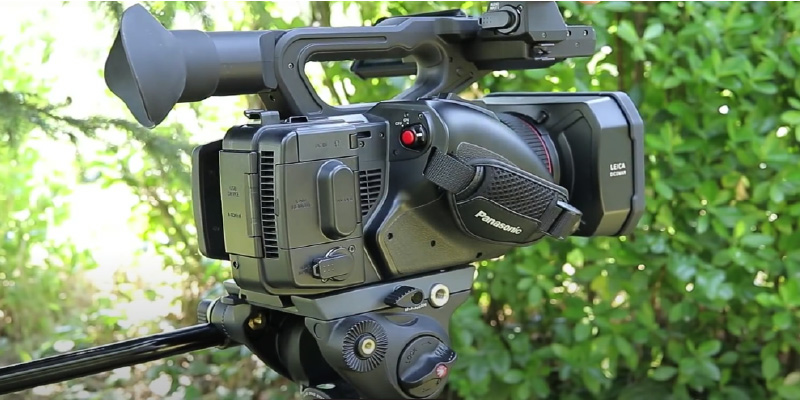
Additional Info
| Last updated price | $3,197.99 |
| Stock | In stock |
| ASIN | B01LANDWE6 |

Sony HXR-NX80
Palm-Sized, Ultra-Lightweight Build
The HXR-NX80 is also not cheap but the difference between this camera and the one we've reviewed before is more than noticeable even at first glance. Since the device measures 5.1 x 7.3 x 11.4 inches and weighs less than 3 pounds, it is much more nimble and mobile than most premium camcorders. Its palm-sized, ultra-lightweight profile allows you to shoot without worrying about the limits that the environment and the situation might apply. This is the camera that you can bring anywhere with you yet make sure that you're not sacrificing image quality.
Most compact camcorders compromise image performance to achieve the reduced size but this device, with its giant, 1-inch, 1.0-type stacked CMOS sensor, offers stunning background bokeh defocus effects and top-notch sensitivity, capturing high-quality video with less noise, even when the conditions are very bright or too dark. Thanks to the sensor's increased size and the 14.2-megapixel (effective) graphic resolution, the camera ensures that more light can reach the sensor, reducing blur and noise and providing clear and steady pictures even when the scenes are offering minimum illumination.
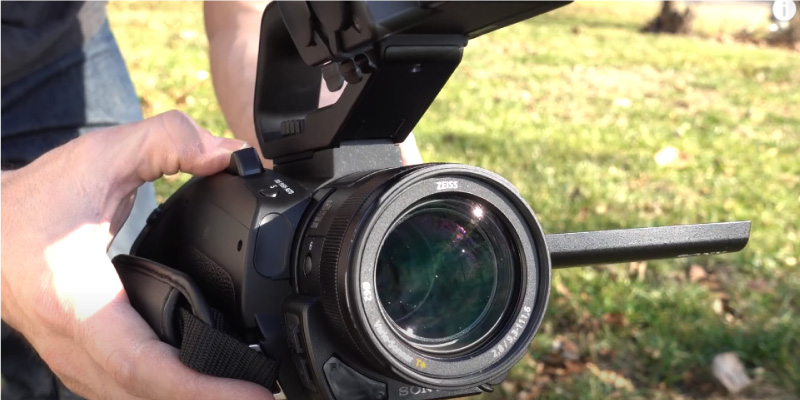
Hybrid Autofocus System
According to the people behind the product, its biggest selling point is the hybrid autofocus system. Now, we can see where they're coming from. First, the system offers detailed phase-detection, reaching 273 reference points which add up to ~84% of the image area. Second, there are also the face detection and lock-on autofocus tech, estimating the subject movement and seamlessly capturing fast-moving subjects with awesome sharpness. The new autofocus algorithm not only offers accurate focusing but also excellent tracking. You can configure the autofocus drive speed, tracking depth range, and the subject's switching sensitivity, accommodating various subjects and content styles.
With the first, you can set the speed at which the focus switches, from rapid switching to fit sports events to slow adjustments to suit drama production. The track depth setting lets you select the field depth, going wide when the subject is moving fast and narrow to fine-tune the camera's depth to fit slow-moving subjects. The switching sensitivity setting allows you to lock tight onto any single subject yet switch the focus with fluidity, perfect when shooting, say, a line of runners.
We can also talk about the model's Wi-Fi and NFC modules that allow you to control the camera remote-style and the wide-angle ZEISS Vario-Sonnar T lens that lets you easily capture panoramic landscapes, enabling smooth and natural adjustment. But even without going into these details, the Sony HXR-NX80 is already the best product on this list when you want to not only capture but also stream weddings, different live events like interviews and seminars, sports events, and more.
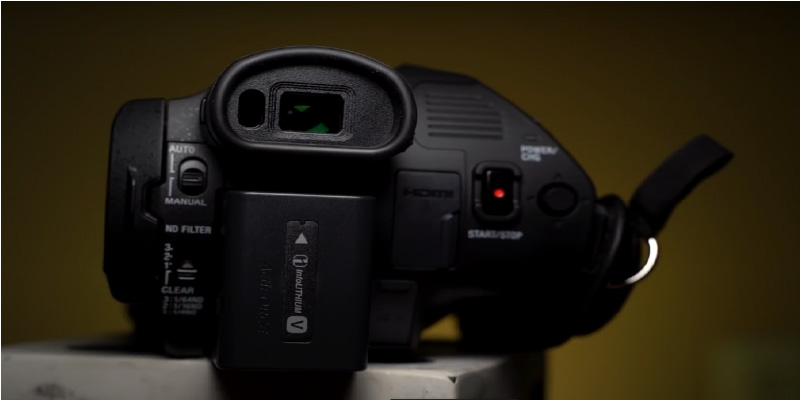
Additional Info
| Last updated price | $2,298.00 |
| Stock | In stock |
| ASIN | B076HX3BX4 |
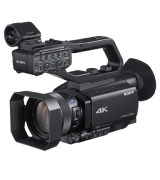
Canon XA11
Pro Quality at an Affordable Price
Compared to most professional video cameras, the Canon XA11 is pretty affordable. Yet, the model's specs are good enough to trade blows with most premium models. Sure, the camera has its flaws, including the passable but not impressive effective graphic resolution measuring 2.91 megapixels. The sensor's not that huge but, on the upside, its signal-to-noise ratio is pretty remarkable, ensuring vivid and accurate video recording thanks to its high sensitivity. To add more, boasting +3 dB low-luminance noise rating, the device will be capturing sharp images with precise and detailed visuals even when the lighting conditions are practically nonexistent. Plus, there's also the Infrared Shooting mode, enabling low-light capture with no ambient light available at all.
The camera cannot record 4K footage, which's to be expected considering that it costs almost twice less than most 4K camcorders. But, with multiple recording modes, adjustable resolutions, and variable frame rates, this model's flexible and adaptable to practically any production environment, producing solid 1080p (FHD) films.
Meanwhile, featuring Wide DR Gamma and Highlight Priority modes, the device will allow you to capture varying natural tones and colors, filming not only realistic but also rich and vibrant footage. With these modes, you can rest assured knowing that the visuals will remain authentic yet dynamic.

Adaptable to any Shooting Situation
Most camcorders within this price bracket compromise audio to some degree. The opposite is the case with this device. Featuring two XLR inputs, the camera enables not only sophisticated but also pretty convenient audio recording on two separate channels. The microphone is good at reducing background noise, allowing the terminals to capture crisp audio, with 16 volume settings ensuring accurate audio monitoring.
Not unlike its more expensive Canon competition, the model's adopting an eight-blade circular aperture design, creating smooth out-of-focus areas with programmable direction and sensitivity modes.
Construction-wise, the camera is in its own class. There are five assignable buttons enabling custom shooting that can be configured to match any user's needs and preferences. The handle that hosts the XLR terminals, mic, external mic holder, IR light, tally lamp, accessory shoe, and different controls is detachable, enabling convenient storage and transportation.
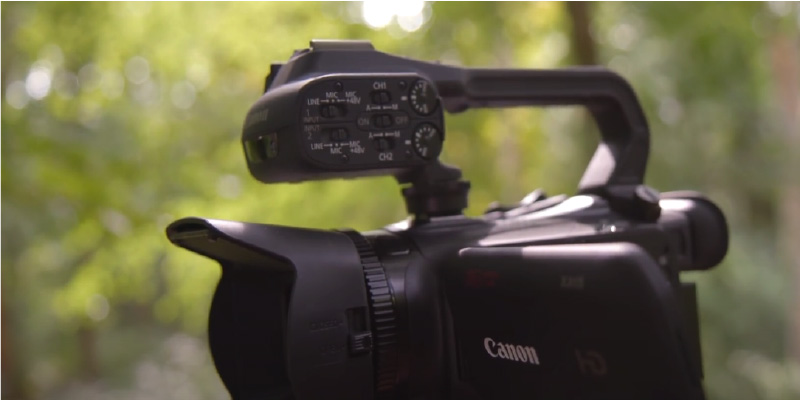
Additional Info
| Last updated price | $1,199.00 |
| Stock | In stock |
| ASIN | B0773Y4HTC |
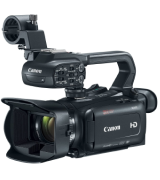
Canon VIXIA HF G50
Seeing is Believing
We're visual creatures. Seeing is believing where most people are concerned. With the Canon VIXIA HF G50, you can record knowing that people watching the footage will be seeing the same visuals you were seeing when recording them, adding drama and intensity when necessary but, first and foremost, making sure that the colors and the details remain authentic and realistic.
The device is loaded with awesome tech but the one that tips any scales is the DIGIC DV six-image processing unit, analyzing the scene within <0.5 seconds, all while taking into account more image parameters than you can shake a stick at. From these parameters, the unit goes to the model's ~matching feature array to select the ones that will be able to ensure optimized results to capture every detail but also reduce image noise, both with and without sufficient ambient light. In the meantime, the advanced automatic white-balance system will be analyzing the image's different areas, making adjustments where adjustments are required to make sure the scenes are captured with nuance and clarity.
This is pretty much where the processing unit ends and where the model's genuine, 35-mm Canon lens begins. Adopting advanced elements and thin yet effective coating, the lens will be reducing every distracting effect imaginable, from flaring to ghosting, reproducing sharp images with minimal distortion.
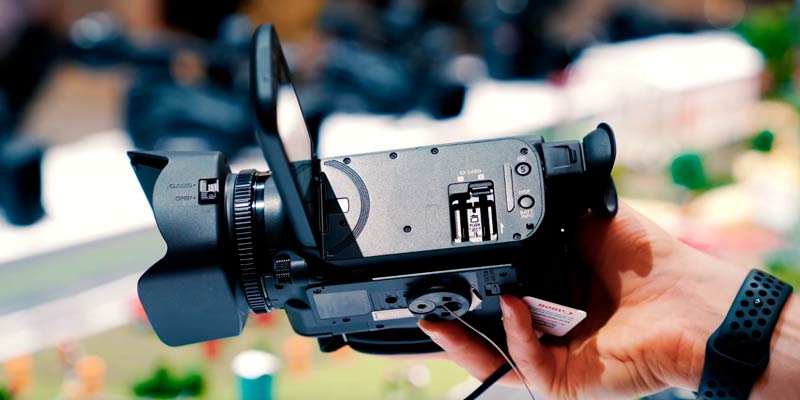
Accurate Composition Judgment Too
Even the best lenses are rendered useless when you're filming fast-paced visuals without sufficient image stabilization. By no luck and no happy chance but thanks to the experienced engineers behind this product, the 5-axis image stabilization system here is off the charts, correcting camera shake without delay so that even handheld footage recorded at long focal lengths remains sharp and steady.
Likewise, there's also the model's Dynamic Image Stabilization mode. This mode will lend you continuous adjustment throughout the entire zoom range, correcting the broadest motion range and adding extra compensation at wide-angle focal lengths. Even with you walking while shooting, the system can guarantee smooth and practically distortion-free audio.
The company's trademark eight-blade circular aperture has not gone anywhere too, reducing the starburst effect, which means that the backgrounds come out circularly blurred, creating these beautiful images with an authentic, sure, but also an artistic impression to them. In the same vein, the tiltable electronic viewfinder enabling detailed and accurate composition judgment, the five assignable buttons providing customisation options, the Slow- and Fast-Motion modes, and the Interval Recording have not changed compared to the model's predecessors.
What's changed is the bright, 3-inch touchscreen that offers rich yet natural color reproduction and, with its streamlined UI, let you choose focal points, track moving subjects, and shoot and watch the footage with fun and ease. You'll see detailed and concise explanations popping up when you select shooting modes and recording formats, so even the least experienced videographers will figure the camera out within the first few tries.
Long story short, the VIXIA HF G50 will allow you to shoot with comfort and confidence knowing that the footage you have recorded will always look stunning.

Additional Info
| Last updated price | $1,099.00 |
| Stock | In stock |
| ASIN | B07MLBD875 |
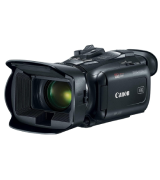
Panasonic HC-WXF991K
Ensuring Accurate Contrast Levels
The Panasonic HC-WXF991K is among the cheapest 4K camcorders that you can put in the professional category. When you look at the models below 1000 bucks, trade-offs are inevitable compared to cameras that cost around $2500. That being said, we do not have many substantial issues with this device, except that the LCD touchscreen is not especially responsive, so sometimes you have to press the icon twice or practically squeeze the screen to achieve any results. Besides that though, the camera can even compete with most high-end models.
First things first, the LEICA Dicomar lens and the 1/2.3-inch BSI MOS sensor measuring 8.29 effective megapixels are good enough to capture sharp and detailed 4K footage. The lens will be producing subtle nuances and shading, while the engine behind the sensor will be suppressing distortion to make sure the scenes are rendered with consistent accuracy. Without going into construction details, these two elements provide an excellent foundation upon which the model's high-end tech and features are resting.
These features include the precise EVF (electronic viewfinder) that gives you accurate and detailed composition judgment, emulating the recording experience that only the most expensive professional video cameras are able to provide.
A comparable sentiment can also be extended towards the company's unique take on the high dynamic range (HDR) mode, reducing excess contrast that comes from overexposed and underexposed shooting conditions. With this mode, you can shoot without worrying that there's too much ambient light or too little. Going into more technical details, the mode basically combines two images that you take with different exposure levels, eliminating blocked shadows and blown highlights. Using the dedicated HDR button, you'll be able to access quick mode changes.

Easy Tracking, Smooth Zooming, Exact Panning
Panasonic stabilization tech is usually on-point and the 5-axis hybrid O.I.S. system here follows the playbook deployed across most Panasonic camcorders. The 5-axis correction system excels at suppressing the blurring that's caused by unwanted handheld shaking, keeping the footage smooth and fluid.
These inexpensive cameras are usually lacking from the software perspective but, again, that is not the case with this device. With the post-editing software, you'll be able to easily zoom-in on subjects without changing the camera angle. The camera will be automatically keeping the subject inside the cropped area. You can pan any scene with two clicks, selecting the start and end points.
In short, the Panasonic HC-WXF991K gives you all the creative and editing solutions you need to capture and produce like a pro.
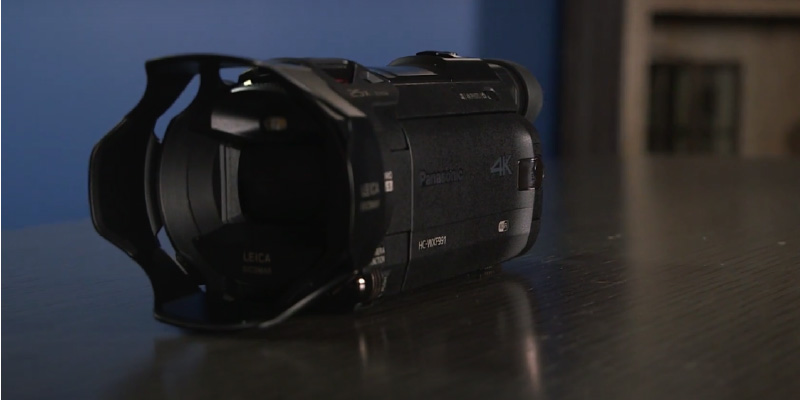
Additional Info
| Last updated price | $1,699.99 |
| Stock | In stock |
| ASIN | B01A60T3R4 |
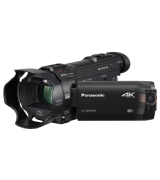
What Is a Professional Video Camera?
From landscape photography and portraits to wildlife photography to filming and streaming seminars, interviews, sports events, weddings, government hearings, corporate environments, even cinema production and online distribution, professional video cameras are the only devices that allow you to capture and record all these scenes and accommodate all applications. These are the devices that meet the professional videographers' high demands, designed to satisfy pros yet good enough to allow even the least experienced users to capture excellent footage.
These models come equipped with high apertures, large sensors, sophisticated engines, and high-end lenses. More often than not, these HD video cameras are adopting image stabilization systems comparable to the latest GoPro cameras, decent integrated mics, and XLR terminals that allow you to attach external microphones to them.
They're not as portable as these vlogging cameras and, needless to say, these spy pen cameras but you also cannot compare the specs between these passable devices designed with mobility purposes before anything else and these professional-grade devices designed and fitted with the best tech available to capture the finest details and to keep the visuals rich, vivid, and authentic.
What Features to Compare
Sensor
Professional video cameras are naught but more demanding devices compared to most camcorders, so things like sensor and lens define them as much as the next video-capturing tools. Sensors are complicated. You're supposed to be taking into account its precision, graphics resolution, depth field, sensitivity, ability to capture subtle nuances, shading, produce background bokeh effects. There's also the sensor's size and signal-to-noise ratio that you need to keep in mind as well as how good it is at shooting in overexposed and underexposed conditions.
Lens
Lenses are no less complicated than sensors. First, you need to select the appropriate type (the differences between which we've explained below). With that type, you'll select the lens' ability to reduce distortion, flaring, ghosting, and rendering images with consistent, above-average accuracy. More often than not, professional video cameras come equipped with zoom lenses, allowing you to record and capture photos without twisting ankles and running around the scene and rotate between close-ups and wide shots without moving. With these lenses, make sure they're sharp enough and good enough at blurring out the background.
Zoom and Stabilization
Again, this is where pro models are not different from most cameras except that they're more demanding. Most pro camcorders come adopting somewhere around 20x optical zoom and 200-400x digital zoom but these numbers can be misleading since there are models that can give you as much as 1500x zoom but the sharpness and clarity levels drop substantially, so we would not recommend jumping to conclusions based on these numbers alone.
Stabilization-wise, pro camcorders are usually fitted with 5-axis hybrid systems that match high-end action cameras, suppressing blurring that appears when you shake the camera and keeping the video smooth despite the constant shaking.
Modes and Features
The best video cameras are loaded with different modes and features, from fast- and slow-motion shooting to different software image stabilization solutions to even infrared shooting modes that allow you to film without ambient lighting. Sometimes, these modes and features can be pretty gimmicky though, so we'd suggest looking into them first before making and decisions.
Interfaces and Audio
With interfaces, things are pretty simple: the more the merrier, sometimes even including Wi-Fi modules that you can use to control the camera from your smartphone. Audio-wise, most pro models enable 2-channel recording and come equipped with decent microphones that can minimize background noise.
Understanding Different Lens Types
Even experienced photographers seldom understand the differences between different camera lenses and where these lenses ought to be applied, what are the upsides and the downsides, and where these differences come from. To that end, we've decided to examine and explain the six most popular lens types using terms accessible to beginners and without going into complicated technical details.
Standard Prime Lenses
These lenses keep the focal length fixed, which means that when you go with the 35-mm lens, you'll only have a 35-mm perspective, no zooming in and out. Because you can only record videos and take pictures from one fixed length, you're forced to physically move to go from wide shots to close-ups. Compared to zoom lenses, prime lenses produce the sharpest pictures, are usually more lightweight, better at coping with limited ambient light, and are pretty versatile, enabling photographing anything from interiors to landscapes and portraits. Because you're unable to zoom though, when moving away from and close to the subject is not an option, you're forced to carry multiple lenses.
Zoom Lenses
Zoom lenses are flexible and adaptable. These lenses let you stay in one place so that you do not have to run around and twist ankles to choose the right angle. Normally, with one AF (autofocus) function, you can zoom to multiple focal lengths, maintaining the focus while you're changing the focal length so that you can snap pictures without delay. With these lenses, the upsides are obvious, with the zoom capabilities allowing you to utilise multiple focal lengths from one lens. Using the zoom feature, you can capture wide shots and close-ups without moving one foot. These lenses accommodate wildlife photography better than most but you can also use them to capture weddings and portraits. The downsides include high aperture, meaning less compression and bokeh, increased weight, and reduced sharpness.
Wide-Angle Lenses
With wide-angle lenses, everything's in the name. These are the lenses that landscape photographers use to make sure they're able to capture the entire scene. Wide-angle lenses distort photos but you can minimize the distortion via post-processing afterwards. These lenses are lightweight, so you can always throw them inside the most crammed backpack and bring with you on a hiking trip. They're providing a great depth of field but lacking compression-wise and, again, can produce distorted images.
Telephoto Lenses
Way, way back, these lenses were reserved for telescopes. Nowadays though, many different professionals belonging to different fields use these lenses, from sports photographers to wildlife enthusiasts. The increased aperture enables telephoto lenses to capture subjects and scenes far away from the camera. Plus, the shallow depth of field makes these lenses better at blurring out the background. They're pretty heavy and expensive though, not something we'd recommend to even most enthusiasts, let alone beginners.
Fisheye Lenses
Basically, fisheye lenses are ultra-wide lenses. These lenses are pretty much reduced to the abstract photography field, capturing the most panoramic view. More often than not, you'll find these lenses inside security cameras. That being said, they're not bad at capturing anything between small spaces and wide landscapes, provided you do not mind the noticeable line distortion.
Macro Lenses
Macro lenses enable extreme close-ups, showing fine details like hairs on insects, water droplets on plants, and more. You use these lenses to reproduce a life-size, 1:1 image of the subject you're capturing. These lenses enable the most detailed and precise shots, from snowflakes to the most minute wedding details. They are not affordable though and they're not that good at anything aside from capturing close-up pictures.


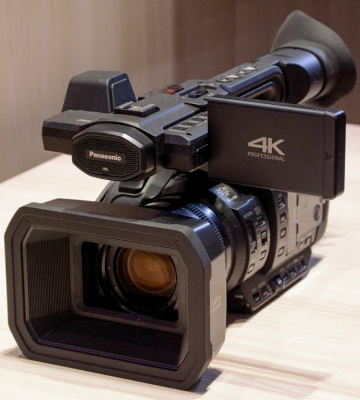

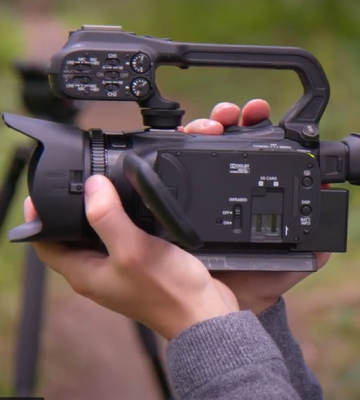
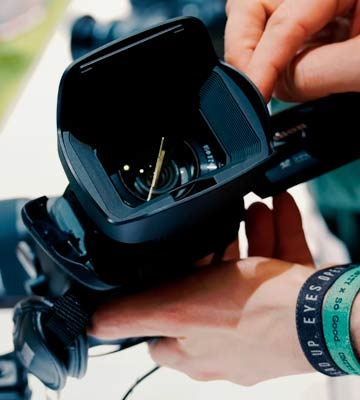
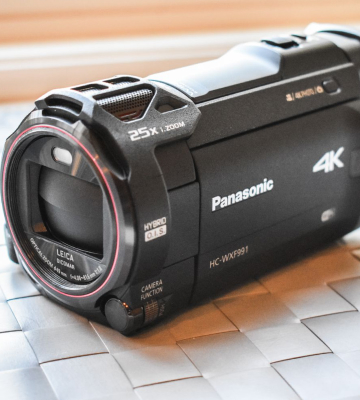

Your comment was successfully sent
Error! Please try again later